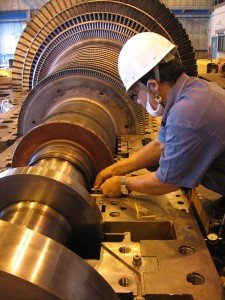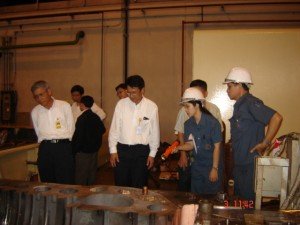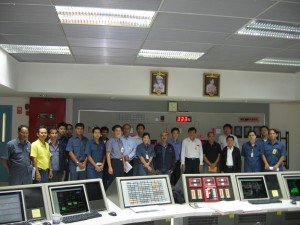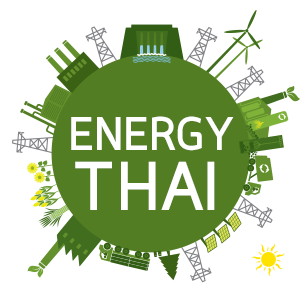The 18th Conference of the Electric Power Supply Industry (CEPSI), hosted by Taiwan Power Company (Taipower), will be held on October 24-28, 2010 at the Taipei International Convention Center and the Taipei World Trade Center-Exhibition Hall 1 in Taipei, Taiwan.
I would like to post one of the abstract of this upcoming presentation in the Topic II-9: Life assessments, failure analysis and chemistry here.


REMEDIAL ACTION STEP OF SUBSYNCHRONOUS VIBRATION TRIP ON STEAM TURBINE:
A CASE STUDY OF EGAT SOUTH BANGKOK POWER PLANT
[Overview]
When Steam Turbine was not damaged at all, it kept on suddenly shutting down by trip vibration magnitude. It became the most serious issues on the top of the executive table. Immediate action was needed because we had to start up the unit as soon as possible. We initially had to choose the method from the shortest time taken and then the most efficient action. Due to the fact that Subsynchronous could be self-excited vibration which was always associated with the modified natural frequency of the rotor system, it could be the result of every single source of rotating behaviour. This paper presents the Subsynchronous problem and remedial action step of 115 MW Steam Turbine in South Bangkok Combined Cycle Power Plant which was first synchronized in 1995 and had found the problem since March 15th, 2008. We trust that this Action Step can be applied for Subsynchronous vibration problem of all power plants.
[Methods]
After the trip event, we found that the Steam Turbine heavily had vibrated up to the overall magnitude of 200 ump-p at 75% load (Trip Setting at 225 ump-p) while Subsynchronous had value up to 10 ump-p. Then we had to choose the action step on the condition of Minor Inspection scope. The 3-day working on Compromised Balancing which could reduce vibration magnitude of 1xRPM frequency was selected, but this method was failed at that time. Therefore, we tried another method, Bearing Inspection, for 8 days. Then, the inspection showed that Bearings had to be replaced. After that, we started up the unit again and found the same signal that we had haven before. However, the Steam Turbine is able to supply higher load, longer as it could run. It eventually tripped at 90% load while MVAR was raised. Consequently, with GE, OEM, recommendation, we had to decide to perform 1.5-month Major Overhaul so that we could execute the rest activities as followings: dividing flange level inspection, horn drop test, internal alignment, rubbing decreasing, foundation deformation inspection, re-alignment of Turbine & Generator Rotor etc.
[Results]
Executing most of remedial action steps, we started up again on July 20th, 2008. Although the Subsynchronous still appeared, the Turbine could bear on higher Subsynchronous magnitude of 80 ump-p. In fact, the Steam Turbine condition was better, but it further needed correct Compromised Balancing to handle Turbine carefully and suitable oil viscosity to help steadily rotatable bearings. The result was that the Subsynchronous magnitude reduced gradually. Finally, the unit could be brought back to dispatching control center on August 1st, 2008
[Conclusions]
In Conclusion, the Subsynchronous vibration problem analysis needed to consider all area of rotating behaviour. The EGAT team also had to make decision under time limit and less effort restriction. Moreover, the most important before following the Action Step, the Steam Turbine condition and accurate maintenance record had to be considered. The obvious example is that the first action of Compromised Balancing was not succeeded because of the Steam Turbine condition.

The last picture was captured on the day we can bring it back to life again !!!!!!! we all breathed a sigh of “RELIEF”.
See you there in Taipei soon.
